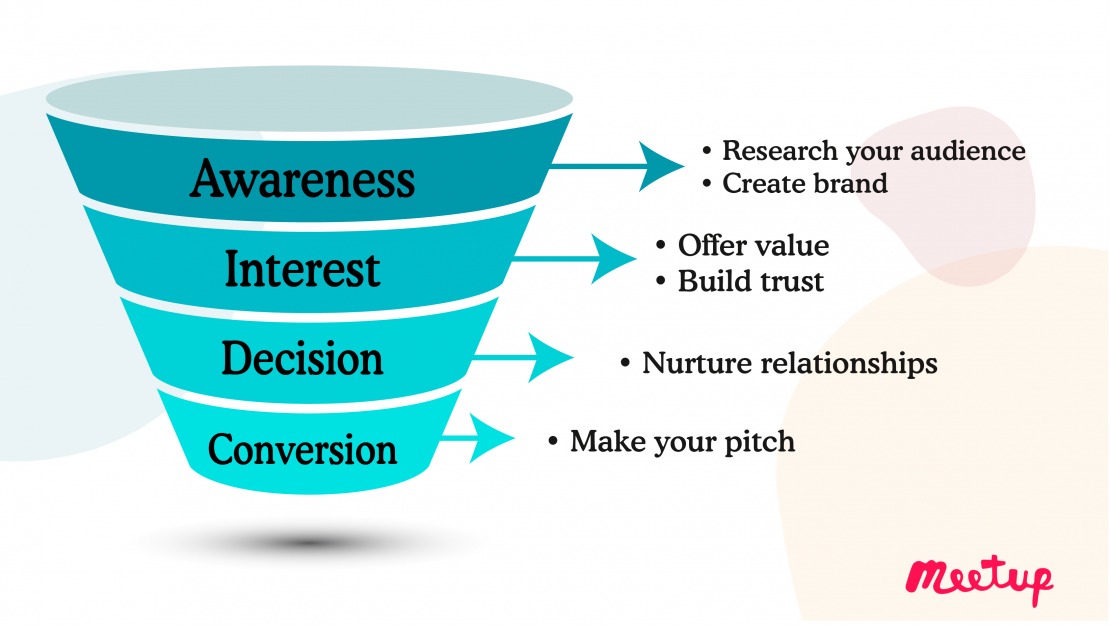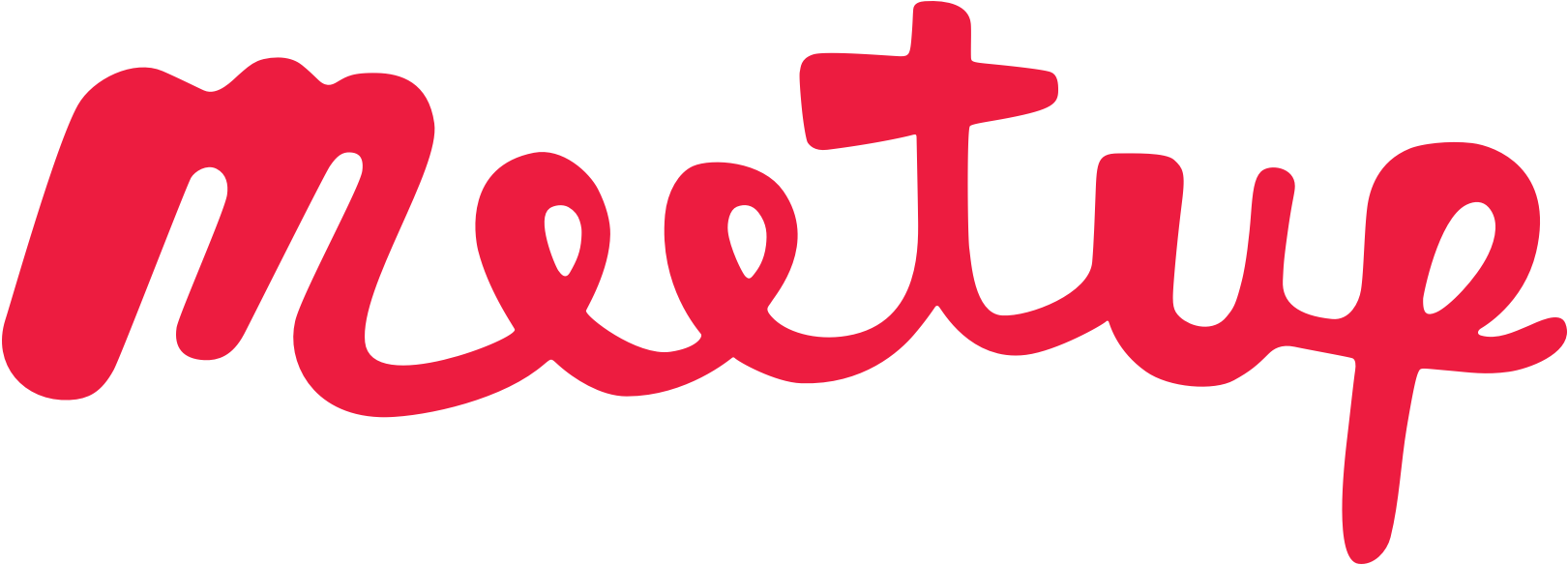Meetup Pro can be an effective tool for elevating your company’s brand and expanding your customer base. By using Pro’s community-building features to develop a sales funnel that engages prospects and customers, generates qualified leads, and cultivates brand loyalty, you can create a winning event marketing strategy that takes your company to the next level.
What is a sales funnel?
A sales funnel is a visual representation of a prospect’s journey through the stages of the sales cycle, from their first contact until they make a purchase. The sales funnel is a useful framework for providing insights into your sales performance, customer acquisition strategy, and customers’ needs and pain points.
There are four stages in the sales funnel: awareness, interest, desire, and action. Read on to learn how awareness plays a key role in educating prospects about your Meetup brand and core mission.

Stage one of the sales funnel: awareness
With countless Meetup groups to choose from, how does your group stand out from the competition? The first step to making your events shine is building awareness. This stage of the sales funnel is the point in the sales process where people discover and research your brand.
Think of the shape of an actual funnel: it’s largest at the top but gradually narrows as you fall closer to the bottom. Awareness helps you reach a targeted audience based on the interests, skills, or hobbies that matter to them. Moreover, you get a chance to make a great first impression and educate them about your exciting offer: your Pro network of groups and how they provide members with meaningful event experiences.
Create top-of-funnel momentum with Meetup Pro
Meetup Pro has numerous features to grow your community and reach a wider network of members. Here are some top-of-funnel best practices and Pro features you can add to your marketing arsenal to attract the right prospects and build trust with your audience.
Identify your target audience
Awareness is about understanding your ideal customer and what excites them. Demographics including age, gender, profession, and location are all characteristics that go into creating your customer persona.
You can also use third-party services to create a word cloud to spot frequently-used words and phrases on your company channels. By incorporating this data into your strategy, you’ll be well on your way to building a network that reflects your brand’s look and feel and key messaging.
In addition, learn how to use Meetup’s event topics to position your groups in front of a larger audience. Topics are a group of descriptors that Meetup uses to determine what your group is about and whom it should be targeted to. For example, if you want to host a group for photographers, you’d likely choose topics such as “photography,” “photoshoot,” and “visual arts.”
Also, remember to pull inspiration from your word cloud for additional topic ideas. Selecting specific topics optimizes your group audience and informs Meetup’s algorithms on how people can find your network on the platform.
Brand your Meetup Pro community
Think of famous, iconic brands around the world: Coca-Cola, Nike, Starbucks, and others. What do they all have in common? These companies have strong brand appeal due to well-designed visuals and memorable, albeit, simple logos.
Meetup Pro enables you to create custom headers, network logos, and links that point to your company’s web and social channels. If your company already has a visual style guide, lean on those guidelines to create a logo, and source imagery and photos that align with your business visually. Learn more about creating a professional brand on Meetup, branding your Meetup Pro network, and promoting your Meetup brand.
Optimize your Meetup group for search
Search engine optimization (or SEO) is crucial to ranking highly on search engine results pages. Similarly, SEO helps boost the visibility of your Pro network on Meetup’s platform.
Thinking of ways you can incorporate SEO principles into your Meetup event strategy? Here are quick tips to get you started:
- Return to your word cloud. What words appear most frequently? The size of those words indicates how important they are, so be sure to integrate them into your SEO approach.
- Include target keywords in your content. Use them in your Meetup event and group title, headline, and description. This will drive search traffic via the Meetup Platform and major search engines like Google.
- Keep your wording clear and concise. Use language that’s succinct and resonates with your audience. Your group’s page should quickly convey the main purpose and benefits of attending your event and joining your network.
Finally, consider adding video content to your group’s page. Industry wisdom has long held that video improves SEO and leads to conversions and sales. Consider adding it to your group page to share your events with current and future members.
Next up: nurturing a relationship with your community
Now that you’ve identified the tools that will increase awareness about your Pro network’s groups and events, it’s time to leverage the next stage of the sales funnel: interest. Read on for the next part of our series to find out how to excite your customers and create a thriving community with Meetup Pro.
Learn more about Meetup Pro, Meetup’s premium subscription offering.
Last modified on January 22, 2024











